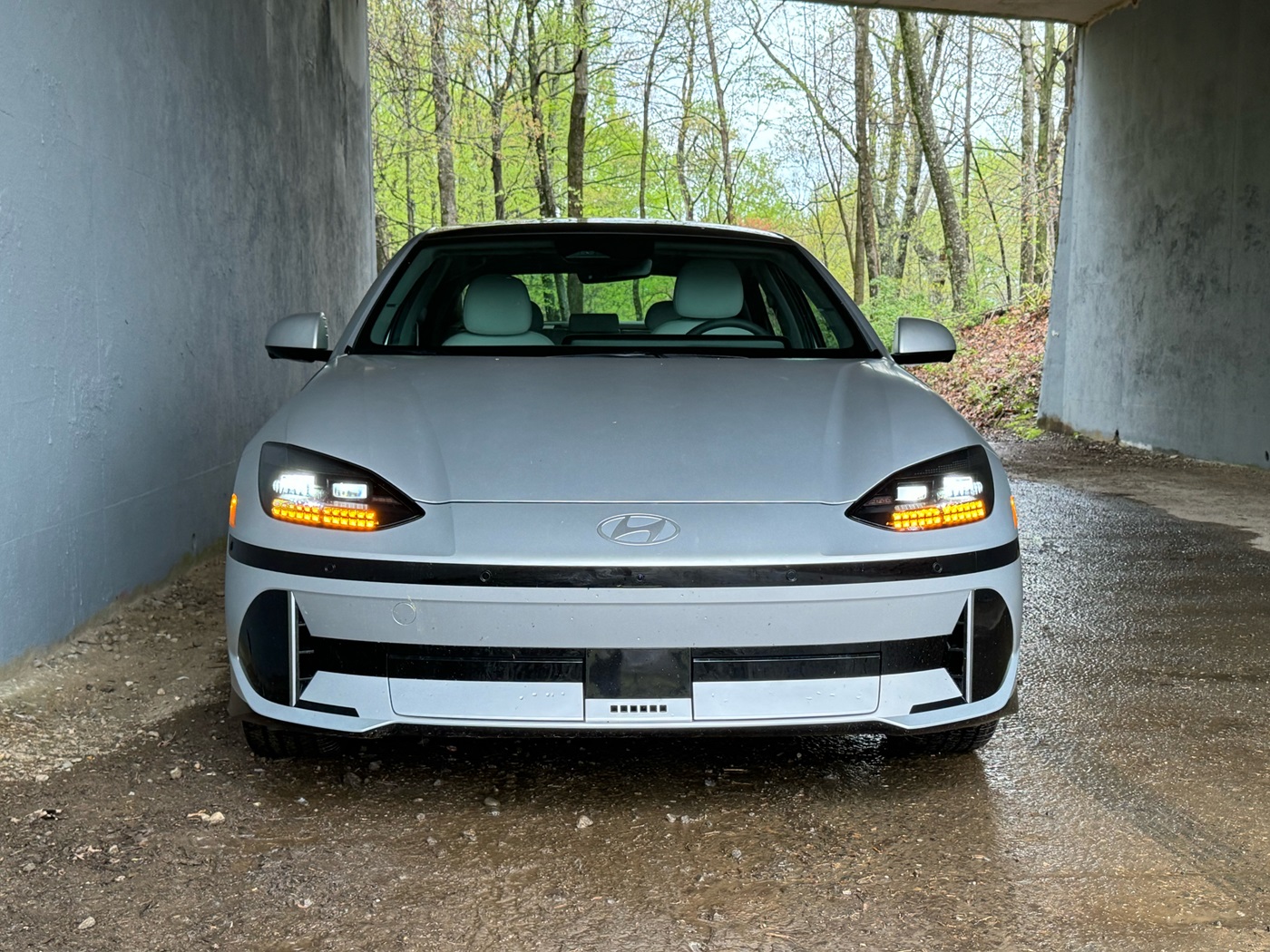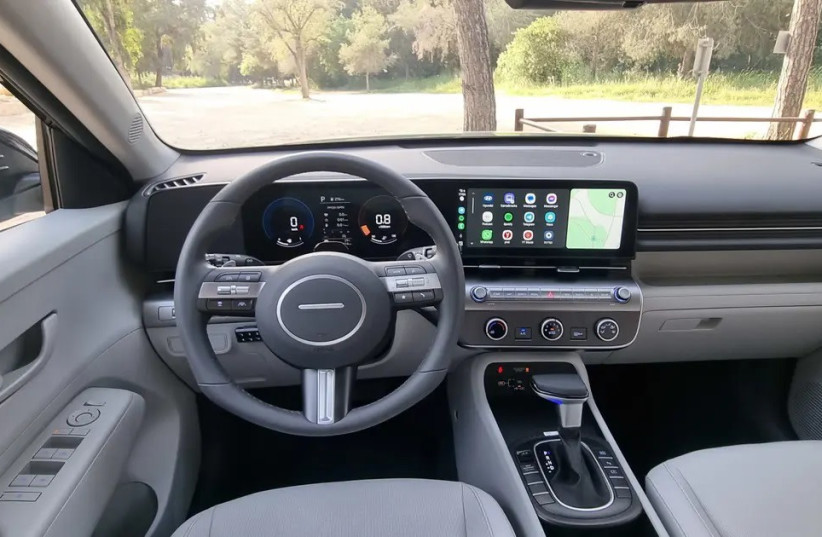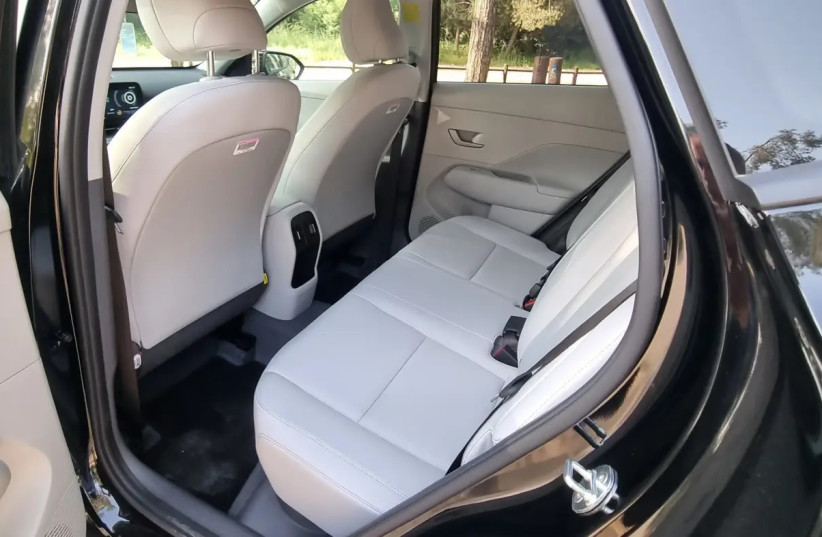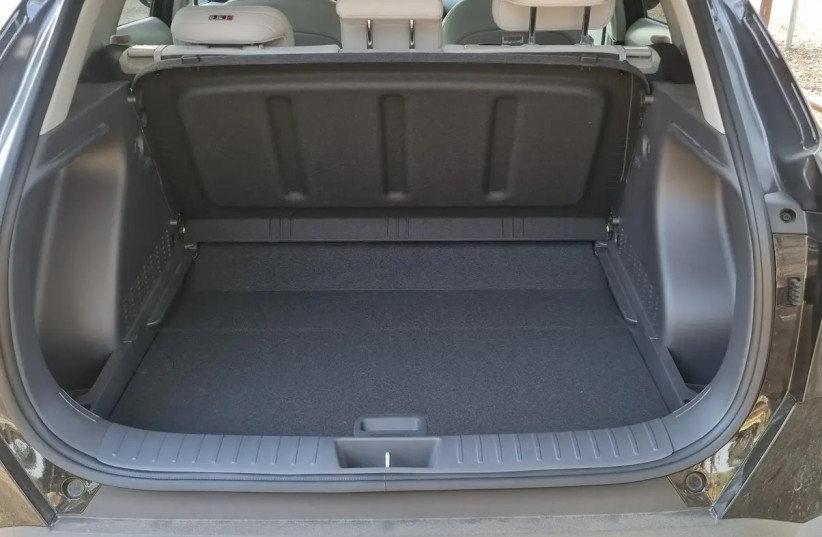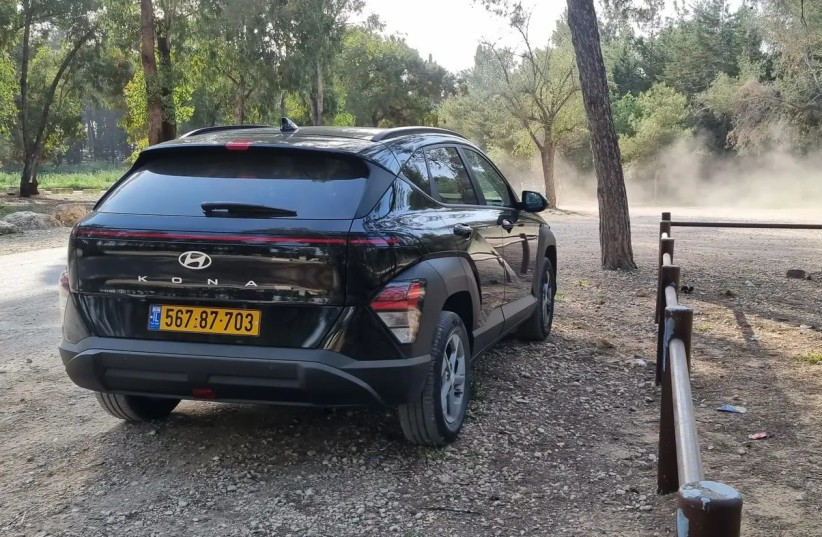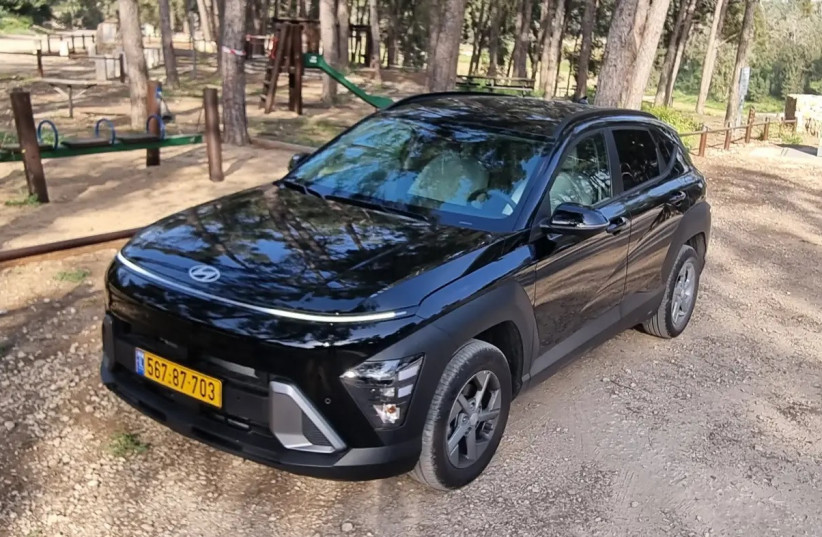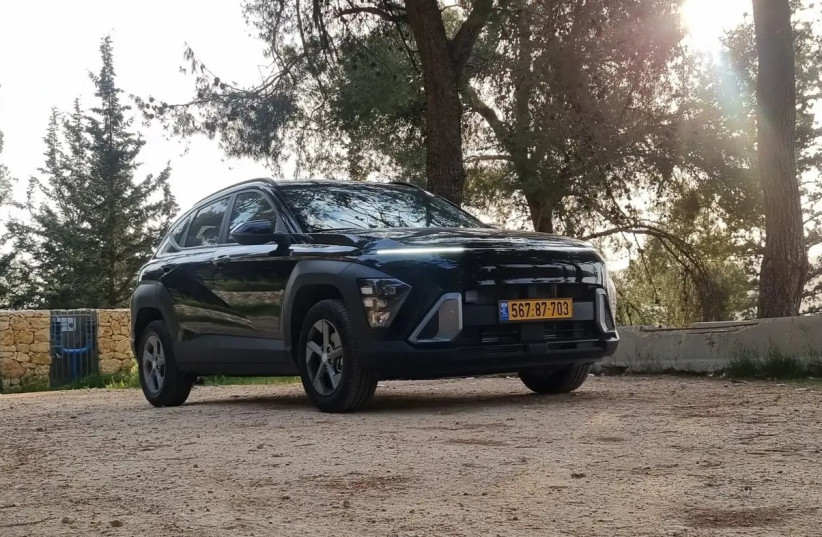In an age where electrified performance is as easy as moving a slider or turning a knob, where speed is a question of how quickly you can shuttle ions from anode to cathode, it’s honestly a little hard to get excited about yet another big, heavy, dual-motor electric vehicle with an ungodly amount of power.
Take the Kia EV6 GT, for example. Great as it is, it feels a bit disconnected at times. It’s stupidly fast, sure, but it’s also a bit boring. Kia added the power but forgot about the rest of the experience, the special touchpoints and tweaks that brands like BMW’s M division or Mercedes-Benz’s AMG have turned into cottage industries.
Given that, I didn’t know what to expect from the Hyundai Ioniq 5 N. More power, sure, but would it feel special? Or would it just feel like a bigger hammer?
As it turns out, Hyundai N’s performance engineers went way above and beyond to create a car that legitimately does feel special—rowdy even, while still delivering all the excellence of the base Ioniq 5.
| Quick Specs |
2024 Hyundai Ioniq 5 N |
| Output |
641 horsepower/545 lb-ft of torque |
| Drivetrain |
All-Wheel-Drive |
| Battery |
84 kilowatt-hours (lithium-ion) |
| 0-60 MPH |
3.2 seconds |
| Top Speed |
162 mph (electronically limited) |
The Complete Package
Let’s get the numbers out of the way first because, impressive as they are, they’re the least interesting part about this car. The Ioniq 5 N is officially rated at 641 horsepower and 545 pound-feet of torque. That power figure is exactly twice what the base Ioniq 5 puts down, a fact that can’t be a coincidence.
That power comes courtesy of new electric motors front and rear, 223 hp to the front and 378 at the rear, each able to go into an overboost mode for 10 seconds to get up to that 641 hp figure.
They’re powered by a wholly new battery pack rated at 84 kWh. That’s up about 7 kWh over the base car, a figure that seems hardly worth the effort of designing a wholly new pack. But then there are many aspects of the Ioniq 5 N that seem like they’d deliver dubious amounts of return on investment, like the extra seam welding and adhesive to boost chassis rigidity or the reinforced axles. And while Hyundai hasn’t given us range or efficiency estimates yet, you can be sure both will be less than a standard Ioniq 5.
Taken in isolation, each of these minor tweaks feels a bit unnecessary, fiddling for fiddling’s sake, but if nothing else, it shows the microscopic attention to detail brought to the table by Hyundai’s engineers in creating something more than the aforementioned bigger hammer.
The Ioniq 5’s suspension has also seen comprehensive revisions, with larger dampers fitted at every corner to provide a broader spread between soft and firm. An electronically activated, clutch-type, mechanical limited-slip differential at the rear ensures that the 282 kW motor at the back doesn’t liquidate the inside tire coming out of corners.
The front diff is open, but the car’s stability and traction systems have been comprehensively revised to enable it to do some basic torque vectoring by braking the inside wheel.
More Ioniq 5 News
Hyundai Motor Sold Over 19,600 All-Electric Cars In July 2023
Listen To Hyundai Ioniq 5 N’s Fake Exhaust At Idle In This Drift Spec Model
Watch 2024 Hyundai Ioniq 5 N Go Hard At The Nurburgring
Hyundai Exec: Ioniq 5 N Will Be “Much Faster” Than i30 N
Wonderful Toys
The software changes extend throughout all the systems under the proverbial hood, but they present themselves in numerous extra features available to the driver. It starts with the steering wheel, which features not only a drive mode button on the upper-left but also two more mode buttons, both labeled N.
The left N button cycles through a few different performance-minded driving modes. You can configure all these to your specifications — so long as your specifications entail a raucous, rowdy experience. The right N button dials up the societal nuisance factor even further by toggling through one of three fake engine noises, played not only inside the cabin but outside the car, too. There’s even a fake shifting experience, which you can read all about here.
Finally, there’s a shiny red button that sits tantalizingly close to your right thumb. A beautiful, shiny button labeled NGB: N Grin Boost. Press this, and you get those 10 seconds of maximum power, in which the car becomes most aggressive, most angry, and lightning quick. Tap this to get to the launch control quickly, but make sure you warn your passengers to put their head on the headrest before you take your foot off the brake.
The customizations continue through to the touchscreen interface, where a specific N page lets you cycle through endless configurable parameters, with toggles for enabling a track-oriented regen mode called N Pedal, an N Race section where you can toggle between maximum power for a single lap or more endurance, and even the N Drift Optimizer, for those who need a little help getting sideways.
The most tantalizing thing on this page, though, is the N Torque Distribution slider that lets you control the car’s power distribution. Leave it in the middle for maximum power from both motors. Want a FWD Ioniq 5 N? Slide it to the left. Want a taste of RWD action? Slide it all the way to the right—and get ready to do some sliding of another sort.
All these toggles and buttons are initially overwhelming and disorienting, way too many options to get through on your first drive. Honestly, though, I love it. This was my biggest complaint about the EV6 GT: There just wasn’t a single iota of performance-oriented customization to the car’s user interface. If anything, Hyundai’s gone a little too far in throwing a kitchen sink full of sliders and options at the Ioniq 5 N. Still, tech-obsessed buyers, those who’ve spent more time than they like to admit fiddling with setups in Gran Turismo, will adore the reconfigurability.
Behind The Wheel
If you’ve never had the chance to drive in Korea, let me assure you that you’re not missing much. Terminally slow speed limits (30 kph, or 19 mph, in many towns) enforced by endless speed cameras popping away at endless gridlock make for an underwhelming place to helm the wheel. Given that, I learned little about the Ioniq 5 N’s more performance-oriented on-road dynamics while in Korea.
However, I did learn that it’s still a perfectly civilized way to get from A to B, just like its non-N variant. Ride quality isn’t terribly compromised by those low-profile 275/35R21 Pirelli P Zero tires, though they bring more road noise to the party. The suede microfiber seats are still quite comfortable for big miles (and we did a lot of miles), while the latest version of Hyundai’s Highway Drive Assist works well on the highway, keeping the car centered in the lane and automatically stopping and resuming when stuck in traffic.
Thankfully, the destination of our long grind of a journey was Korea International Circuit, home of the doomed Korean Formula One Grand Prix from 2010 to 2013. Mother Nature is clearly reclaiming this massive, ill-fated track. Vines crawl up many of the disused grandstands. Sun-faded banners feature the distinctive, walrus-tusked F1 cars of the era, which thankfully haven’t been seen since.
Under-used though the circuit may be, it was a great chance to finally turn up the wick on the Ioniq 5 N. While my time on the track was too brief to know whether the car delivers on its promised endurance. It was enough, however, to determine that the 5 N has a delightful, playful character to it.
In the default mode, Normal, the Ioniq 5 N is fast but ultimately a bit tame and quick to reign in things whenever you start to have a bit of fun. Just give a tap to the N button and everything changes.
Now, the car wants to play. The accelerator is more eager, naturally, but the stiffer suspension imparts more urgency when you head for the apex, and it all culminates in much more fun on the way out. Even with the stability and traction controls well and truly enabled, the Ioniq 5 N gladly wags its tail under full-throttle acceleration, and that’s a delightful thing.
Turn on the N Pedal mode, which amps up the regen to add a sort of permanent trail-braking, and things get even more lurid. Here, I was able to get the car into a properly good slide coming out of the tightest bend on the circuit. This, again, was with the stability control still enabled.
The car definitely had a strong tendency towards understeer. That at least partly comes down to weight. Hyundai didn’t quote a formal figure for the 5 N but did say it weighs more than a regular Ioniq 5, which clocks in at around 4,000 pounds in AWD trim. Given that mass, you can’t expect much in the way of nimbleness on the track. Still, the 5 N was remarkably playful, a legitimately good time.
Every little drift was effortless to catch, just a quick twist of the quickened steering. Braking, too, is precise, despite having no mechanical connection between your foot and those calipers. It’s a full brake-by-wire system, so the car’s ECU decides how much braking to apply in response to your command.
The 5 N can pull up to 0.6 G under regeneration alone, which gets you most of the way there. But, when you ask for more, the car seamlessly brings in the four-piston monobloc calipers at the front and more modest single-piston units at the rear to help reign things in. It’ll even let you brake and throttle at the same time, a useful technique for low-grip racing that I’ve never been able to deploy on an EV before.
So the new N is fast and competent, and that’s all great, but what’s more important is its endurance. Too many high-power EVs can deliver amazing performance numbers only over short intervals. But, push them hard, and they soon start cutting power.
Hyundai N technical advisor Albert Biermann (formerly of BMW M fame) promised two full laps of the Nurburgring before the Ioniq 5 N needed to start dialing back the power. That, he said, was about 16 minutes of full-throttle action.
The goal, he said, was for you to do a 20-minute session at your favorite track, hit the pits, and spend 20 minutes on a fast charger, then be back out for another 20-minute session with no loss in power at all. That, sadly, we didn’t get to test, but it’s the kind of promise that should open the eyes of many a weekend warrior to the joys of electrification.
The Cost Question
There’s no way to hide the fact that the Ioniq 5 N is a big ol’ car. Its weight and girth are considerable obstacles to overcome in making it a legitimate track-day performer. Yet that’s just what Hyundai has done. The Ioniq 5 N is a real joy on the track, and yet also a pleasure to commute through the worst of all the copious traffic that Korea has to offer.
Many of the added features here are of dubious usability, but even the most gimmicky ones are fun, and fun is what Hyundai’s N division is all about. The Ioniq 5 N takes a great car and makes it a proper grin machine.
There is, however, one huge question that Hyundai has yet to answer: price. The Ioniq 5 N is clearly a specialized machine. Hyundai’s current Elantra N and Kona N both carry a roughly $10,000 premium over their base counterparts, representing a nearly 50 percent boost in price. Meanwhile, the approximately $63,000 Kia EV6 GT comes in about $20,000 more than a base EV6.
Given that, it seems unlikely that you’ll get into an Ioniq 5 N for less than $70,000, and I fear the final price will be even higher than that. We at least won’t have to wait long to find out.
The Ioniq 5 N hits dealers in March 2024.
Competitor Reviews
Kia EV6 GT
Tesla Model Y Performance
BMW iX
FAQs
What will the Hyundai Ioniq 5 N cost?
Hyundai hasn’t confirmed pricing on the Ioniq 5 N, but expect it to come in higher than its performance-oriented sibling, the Kia EV6 GT, which will set you back around $63,000.
What is the Hyundai Ioniq 5 N’s range?
Hyundai hasn’t given any range estimates for the performance-oriented Ioniq 5 N. It has a bigger battery pack than the current Ioniq 5 AWD, which is rated for 260 miles. But, with its worse aerodynamics, more weight, and more power, there’s a good chance it’ll come in lower.
Will the Hyundai Ioniq 5 N qualify for EV tax credits?
Unfortunately, since it is currently made in Korea, it will not. Like other EVs made abroad, the tax credit is still available if the car is leased.
| 2025 Hyundai Ioniq 5 N |
| Motor |
Two, Permanent Magnet, Synchronous |
| Output |
641 Horsepower / 545 Pound-Feet |
| Drive Type |
All-Wheel-Drive |
| Battery |
84 kWh, lithium-ion |
| Speed 0-60 MPH |
3.2 seconds |
| EV Range |
TBA |
| Charge Time |
TBA |
| Charge Type |
238 Kilowatt-Hours DC |
| Weight |
TBA |
| Seating Capacity |
5 |
| Cargo Volume |
27.2 / 59.3 Cubic Feet |
| Towing |
TBA |
| Payload |
TBA |
| Base Price |
TBA |
| As-Tested Price |
TBA |
